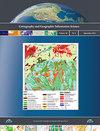A fast grid generation algorithm for local irregular parts of hexagonal discrete global grid systems
IF 2.4
3区 地球科学
Q1 GEOGRAPHY
Cartography and Geographic Information Science
Pub Date : 2023-03-04
DOI:10.1080/15230406.2023.2171492
引用次数: 0
Abstract
ABSTRACT Discrete Global Grid Systems (DGGS) provide a multi-resolution discrete representation of the Earth and are preferable for the organization, integration, and analysis of large and multi-source geospatial datasets. Generating grids for the area of interest is usually the premise and basis for DGGS applications. Owing to incongruent hierarchies that restrict the multi-resolution applications of hexagonal DGGS, current grid generation of hexagonal DGGS for local areas mainly depends on inefficient single-resolution traversal methods by judging the spatial relationship between each cell and the area. This study designs a fast generation algorithm for local parts of hexagonal DGGS based on the hierarchical properties of DGGS. A partition structure at intervals of multiple levels is first designed to ensure the coverage relevance between parent and children cells of different levels. Based on this structure, the algorithm begins with coarser resolution grids and recursively decomposes them into the target resolution, with multiple decomposition patterns used and a unique condition proposed to make the generated grids without gaps or overlaps. Efficient integer coordinate operations are used to generate the vast majority of cells. Experimental results show that the proposed algorithm achieves a significant improvement in efficiency. In the aperture 4 hexagonal DGGS, the efficiency ratio of the proposed and traversal algorithms increases from six times in level 14 to approximately 339 times in level 18. This study provides a solid foundation for subsequent data quantization and multi-resolution applications in hexagonal DGGS and has broad prospects.六边形离散全局网格系统局部不规则部分的快速网格生成算法
离散全球网格系统(DGGS)提供了地球的多分辨率离散表示,更适合组织、集成和分析大型多源地理空间数据集。为感兴趣的区域生成网格通常是DGGS应用的前提和基础。目前六边形DGGS局部网格的生成主要依赖于效率低下的单分辨率遍历方法,主要是通过判断每个单元与区域之间的空间关系来实现。基于六边形DGGS的层次性,设计了一种局部部分快速生成算法。首先设计了多层间隔的分区结构,以保证不同层次的父细胞和子细胞之间的覆盖相关性。基于该结构,该算法从粗分辨率网格开始,递归分解为目标分辨率网格,使用多种分解模式,并提出一个唯一条件,使生成的网格无缝隙和重叠。高效的整数坐标操作用于生成绝大多数单元格。实验结果表明,该算法的效率得到了显著提高。在孔径4的六边形DGGS中,所提算法和遍历算法的效率比从第14级的6倍提高到第18级的约339倍。该研究为六边形DGGS的后续数据量化和多分辨率应用提供了坚实的基础,具有广阔的前景。
本文章由计算机程序翻译,如有差异,请以英文原文为准。
求助全文
约1分钟内获得全文
求助全文
来源期刊
CiteScore
5.20
自引率
20.00%
发文量
23
期刊介绍:
Cartography and Geographic Information Science (CaGIS) is the official publication of the Cartography and Geographic Information Society (CaGIS), a member organization of the American Congress on Surveying and Mapping (ACSM). The Cartography and Geographic Information Society supports research, education, and practices that improve the understanding, creation, analysis, and use of maps and geographic information. The society serves as a forum for the exchange of original concepts, techniques, approaches, and experiences by those who design, implement, and use geospatial technologies through the publication of authoritative articles and international papers.

 求助内容:
求助内容: 应助结果提醒方式:
应助结果提醒方式:


